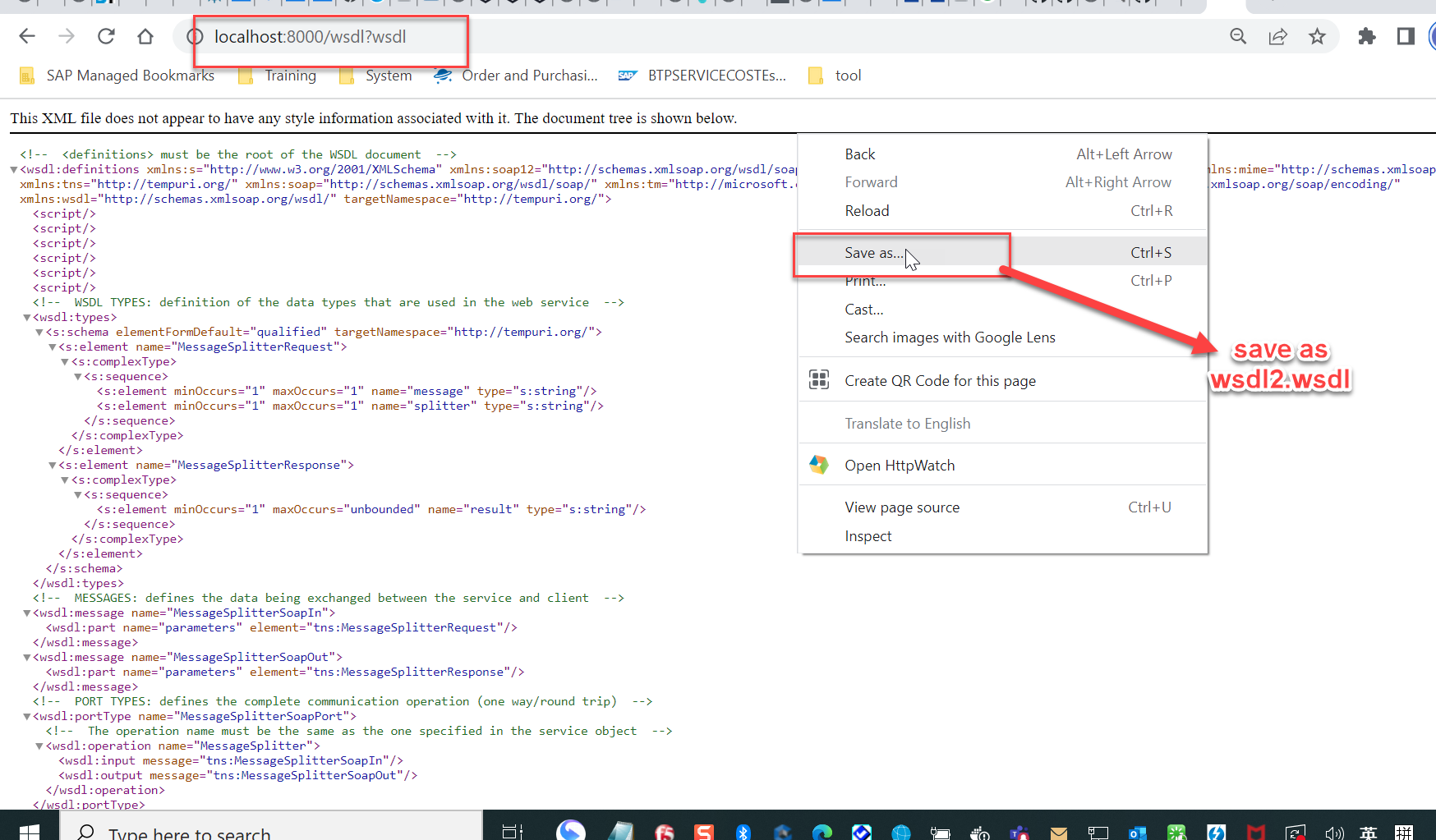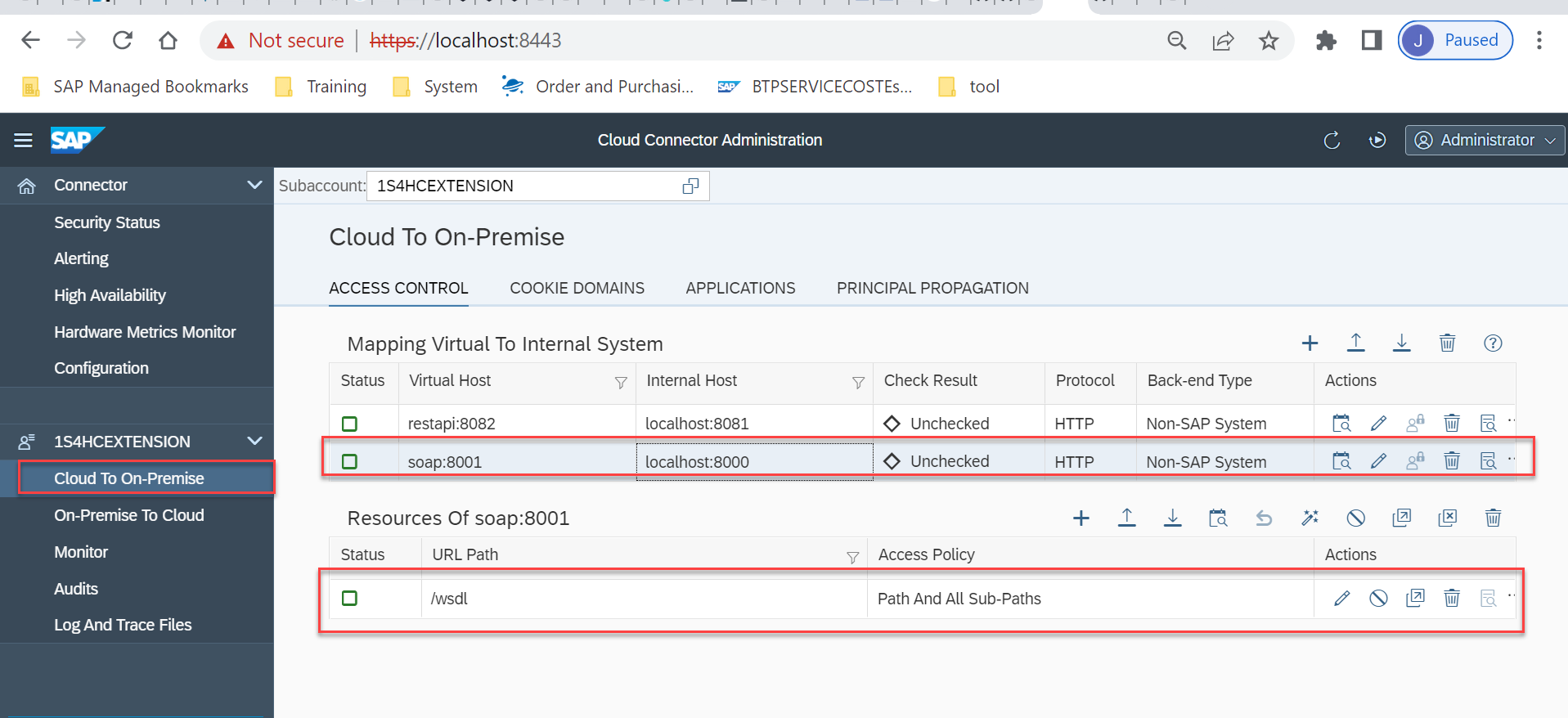
- SAP Community
- Products and Technology
- Technology
- Technology Blogs by SAP
- Deploy a soap server locally and use CPI SOAP Ad...
Technology Blogs by SAP
Learn how to extend and personalize SAP applications. Follow the SAP technology blog for insights into SAP BTP, ABAP, SAP Analytics Cloud, SAP HANA, and more.
Turn on suggestions
Auto-suggest helps you quickly narrow down your search results by suggesting possible matches as you type.
Showing results for
Product and Topic Expert
Options
- Subscribe to RSS Feed
- Mark as New
- Mark as Read
- Bookmark
- Subscribe
- Printer Friendly Page
- Report Inappropriate Content
06-23-2022
1:21 PM
Today I supported a customer who want to build https proxy for third party sequence SOAP API calls and then call the the https proxy in an application . This is new method to simplify the backend development . I want to take this blog to demo an end to end SOAP API call in CPI .
git clone https://github.com/officer-rosmarino/node-soap-example.git
cd node-soap-example
npm install
node app.js
download wsdl file with url: http://localhost:8000/wsdl?wsdl
use soap ui to test soap server
The following is the code for step Groovy script 2
the address and location id come from the following screen shot in BTP cockpit :
Get oauth2 information from cpi runtime service key
Get URL from deployed Iflow:
Test in postman:
The End.
Best Regards!
Jacky Liu
I assume the readers have the following pre-requisits:
Have installed node .
Have installed git .
Have installed and configured SAP clound connector .
Have installed SOAP UI
Have installed Postman .
The following is the steps for the end 2 end demo:
Deploy local soap server
Test soap server with Soap Ui
Configure sap cloud connector to expose local soap server to CPI
Build and deploy Iflow in CPI
Test Iflowing with postman
Deploy local soap server
git clone https://github.com/officer-rosmarino/node-soap-example.git
cd node-soap-example
npm install
node app.js

Test soap server with Soap Ui
download wsdl file with url: http://localhost:8000/wsdl?wsdl

use soap ui to test soap server


Configure sap cloud connector to expose local soap server to CPI

Build and deploy Iflow in CPI


The following is the code for step Groovy script 2
import com.sap.gateway.ip.core.customdev.util.Message;
import java.util.HashMap;
import groovy.json.JsonSlurper;
import groovy.json.JsonOutput;
import groovy.json.*;
def Message processData(Message message) {
//Body
def body = message.getBody(java.lang.String) as String;
def jsonSlurper = new JsonSlurper();
def jsonbody = jsonSlurper.parseText(body);
def msg = jsonbody.message;
def splitter = jsonbody.splitter;
//Properties
message.setProperty("msg", msg);
message.setProperty("splitter", splitter);
return message;
}
<p2:MessageSplitterRequest xmlns:p2="http://tempuri.org/">
<p2:message>${property.msg}</p2:message>
<p2:splitter>${property.splitter}</p2:splitter>
</p2:MessageSplitterRequest>
the address and location id come from the following screen shot in BTP cockpit :



import com.sap.gateway.ip.core.customdev.util.Message;
def Message processData(Message message) {
def body = message.getBody(java.lang.String) as String;
def messageLog = messageLogFactory.getMessageLog(message);
if(messageLog != null){
messageLog.setStringProperty("Logging", "Printing Payload As Attachment");
messageLog.addAttachmentAsString("Message#1", body, "text/plain");
}
return message;
}Test Iflowing with postman
Get oauth2 information from cpi runtime service key


Get URL from deployed Iflow:


Test in postman:


The End.
Best Regards!
Jacky Liu
- SAP Managed Tags:
- SAP Integration Suite
Labels:
2 Comments
You must be a registered user to add a comment. If you've already registered, sign in. Otherwise, register and sign in.
Labels in this area
-
ABAP CDS Views - CDC (Change Data Capture)
2 -
AI
1 -
Analyze Workload Data
1 -
BTP
1 -
Business and IT Integration
2 -
Business application stu
1 -
Business Technology Platform
1 -
Business Trends
1,661 -
Business Trends
88 -
CAP
1 -
cf
1 -
Cloud Foundry
1 -
Confluent
1 -
Customer COE Basics and Fundamentals
1 -
Customer COE Latest and Greatest
3 -
Customer Data Browser app
1 -
Data Analysis Tool
1 -
data migration
1 -
data transfer
1 -
Datasphere
2 -
Event Information
1,400 -
Event Information
65 -
Expert
1 -
Expert Insights
178 -
Expert Insights
280 -
General
1 -
Google cloud
1 -
Google Next'24
1 -
Kafka
1 -
Life at SAP
784 -
Life at SAP
11 -
Migrate your Data App
1 -
MTA
1 -
Network Performance Analysis
1 -
NodeJS
1 -
PDF
1 -
POC
1 -
Product Updates
4,577 -
Product Updates
330 -
Replication Flow
1 -
RisewithSAP
1 -
SAP BTP
1 -
SAP BTP Cloud Foundry
1 -
SAP Cloud ALM
1 -
SAP Cloud Application Programming Model
1 -
SAP Datasphere
2 -
SAP S4HANA Cloud
1 -
SAP S4HANA Migration Cockpit
1 -
Technology Updates
6,886 -
Technology Updates
408 -
Workload Fluctuations
1
Related Content
- Convert multiple xml's into single Xlsx(MS Excel) using groovy script in Technology Blogs by Members
- iFlow ODATA POST API_CV_ATTACHMENT_SRV in Technology Q&A
- Top Picks: Innovations Highlights from SAP Business Technology Platform (Q1/2024) in Technology Blogs by SAP
- How to build SOAP service in SAP Cloud Integration in Technology Blogs by Members
- Cloud Integration: Manually Sign / Verify XML payload based on XML Signature Standard in Technology Blogs by SAP
Top kudoed authors
| User | Count |
|---|---|
| 13 | |
| 11 | |
| 10 | |
| 9 | |
| 9 | |
| 7 | |
| 6 | |
| 5 | |
| 5 | |
| 5 |